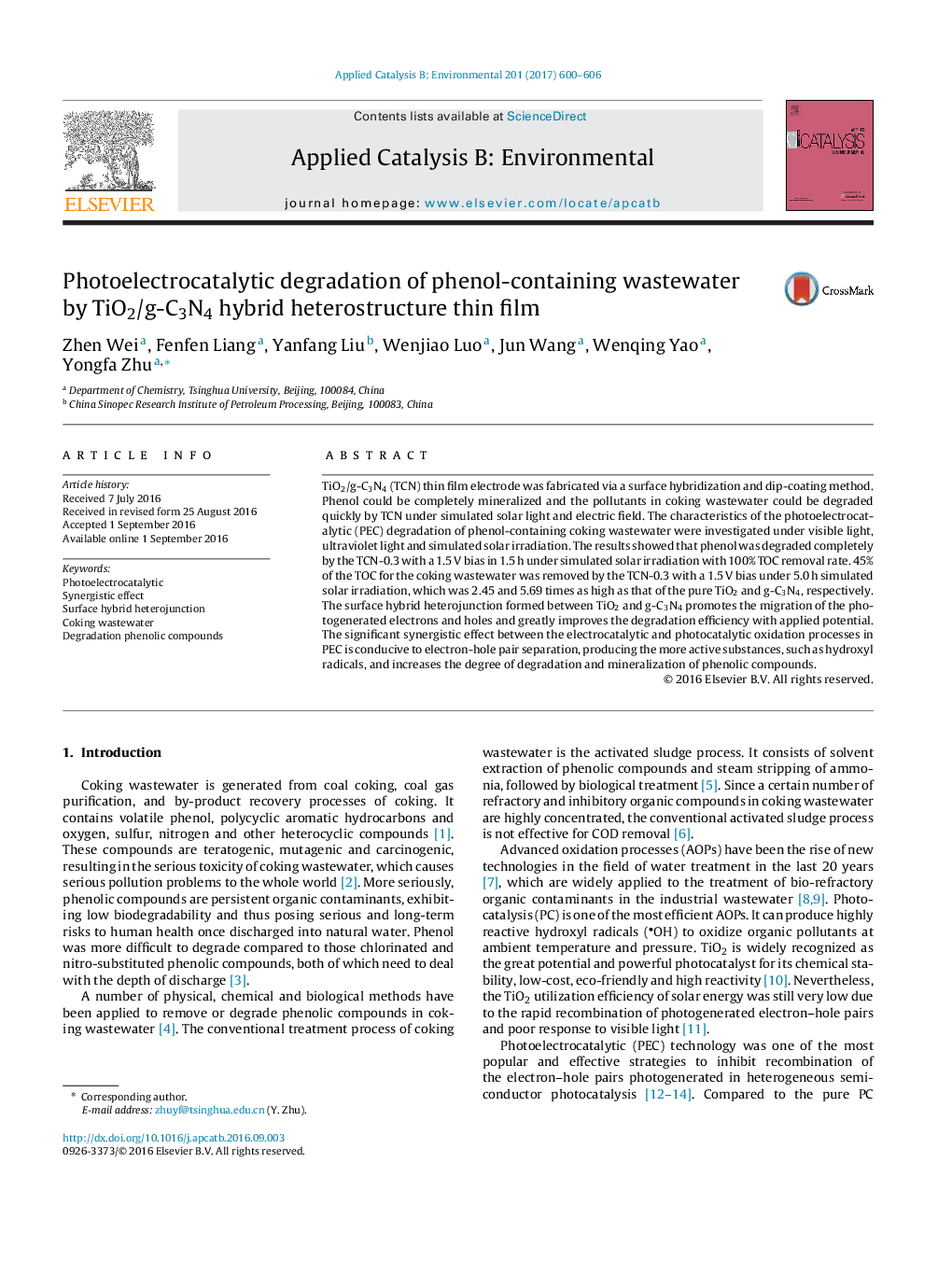| کد مقاله | کد نشریه | سال انتشار | مقاله انگلیسی | نسخه تمام متن |
|---|---|---|---|---|
| 6455077 | 1418819 | 2017 | 7 صفحه PDF | دانلود رایگان |

• TiO2/g-C3N4 thin film electrode was fabricated via a surface hybridization and dip-coating method.
• The surface hybrid heterojunction of TiO2/g-C3N4 greatly improves its photocatalytic and photoelectrocatalytic activity.
• The synergistic effects between the electrocatalytic and photocatalytic oxidation processes in photoelectrocatalytic were illustrated.
• Coking wastewater and phenol can be mineralized by TiO2/g-C3N4 photoelectrocatalytic processes.
TiO2/g-C3N4 (TCN) thin film electrode was fabricated via a surface hybridization and dip-coating method. Phenol could be completely mineralized and the pollutants in coking wastewater could be degraded quickly by TCN under simulated solar light and electric field. The characteristics of the photoelectrocatalytic (PEC) degradation of phenol-containing coking wastewater were investigated under visible light, ultraviolet light and simulated solar irradiation. The results showed that phenol was degraded completely by the TCN-0.3 with a 1.5 V bias in 1.5 h under simulated solar irradiation with 100% TOC removal rate. 45% of the TOC for the coking wastewater was removed by the TCN-0.3 with a 1.5 V bias under 5.0 h simulated solar irradiation, which was 2.45 and 5.69 times as high as that of the pure TiO2 and g-C3N4, respectively. The surface hybrid heterojunction formed between TiO2 and g-C3N4 promotes the migration of the photogenerated electrons and holes and greatly improves the degradation efficiency with applied potential. The significant synergistic effect between the electrocatalytic and photocatalytic oxidation processes in PEC is conducive to electron-hole pair separation, producing the more active substances, such as hydroxyl radicals, and increases the degree of degradation and mineralization of phenolic compounds.
Figure optionsDownload high-quality image (132 K)Download as PowerPoint slide
Journal: Applied Catalysis B: Environmental - Volume 201, February 2017, Pages 600–606